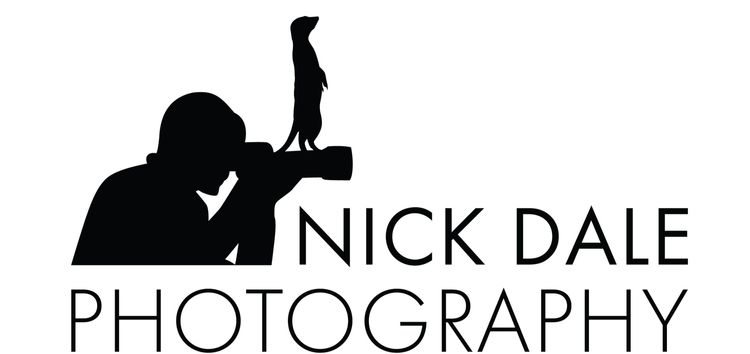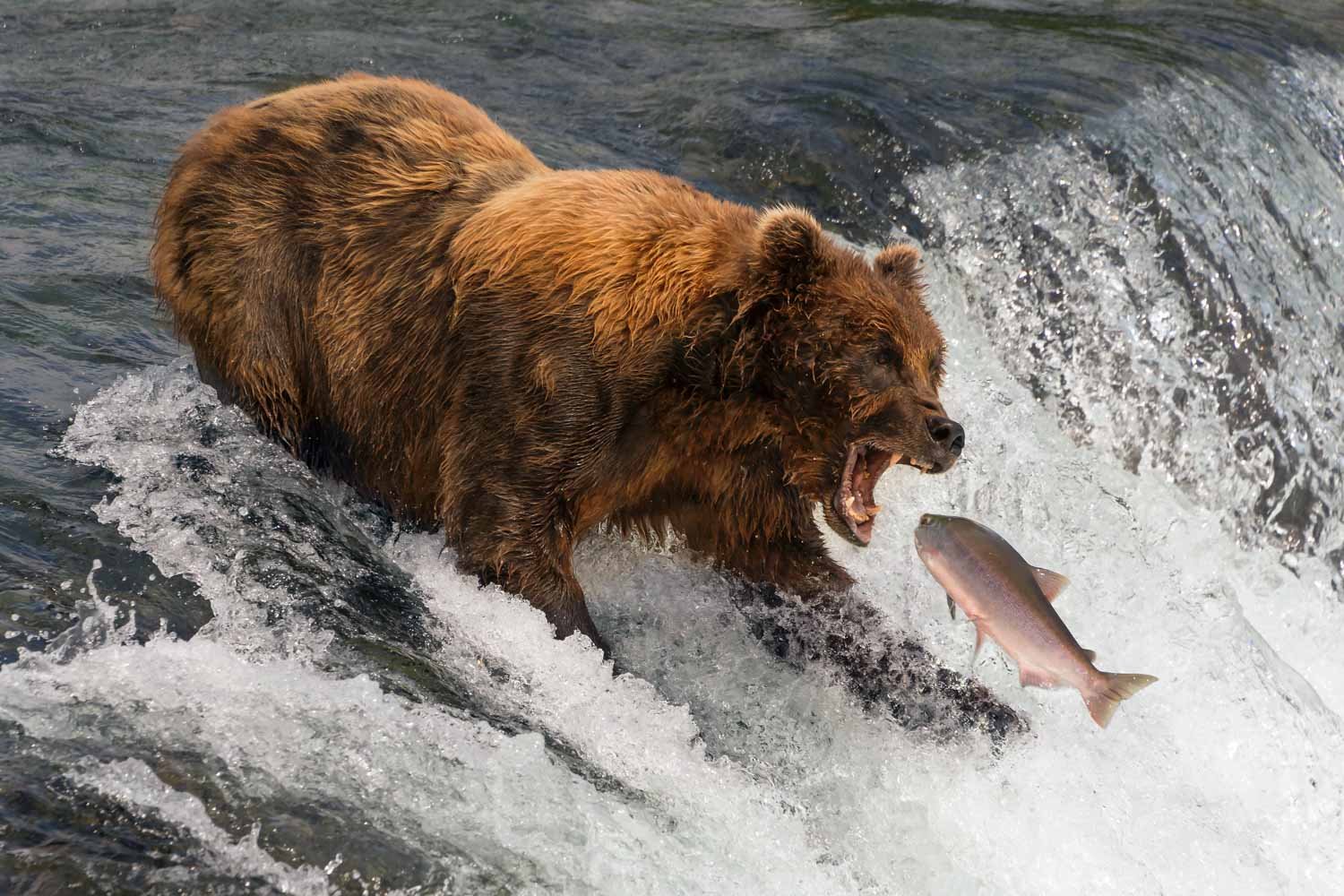Can I phone a friend…?
This is the first of a series of head-to-head photo critiques that compare two similar wildlife shots I’ve taken in the last few years.
The idea is to show you first of all that nobody’s perfect (!) and also to help you identify problems in your own shots that you can then fix - either in camera or during post-processing.
Background
If you don’t know already, both these images are a kind of ‘hommage’ to Thomas D Mangelsen, who took a famous shot called Catch of the Day at Brooks Falls, Alaska, back in the Eighties.
It showed a brown bear on a waterfall just about to sink its jaws into a salmon leaping up from the water below.
There are many different types of bears, but the brown bear is just what grizzly bears are called in Alaska.
I went to Brooks Falls in July 2015 - timing my visit to coincide with the salmon run - and I spent a week there trying to produce my own version of that picture.
I have to say, first of all, that it was incredibly difficult, and the two pictures shown above were the only ones I got that showed both the bear’s mouth open and the salmon in mid-air.
Don’t get me wrong, it was a fantastic experience and one of the greatest wildlife photographic opportunities in the world.
However, there are a number of hurdles that you have to jump in order to have a chance of capturing images like these.
The first is the difficulty of getting there.
First of all, it’s a long old way, and it costs a lot of money.
Door-to-door, getting from my home in Putney to Brooks Falls took me 36 hours, and the whole trip cost over £6,000.
In addition, Mangelsen’s photograph helped make Brooks Falls into an incredibly popular tourist destination, and it’s very hard to find hotel rooms nearby for a week in July.
People book up a year in advance, so I was lucky to be able to find a place just a few months beforehand.
I tried to find out the ‘best’ week to go, but it was very hard to get any useful information about the number of salmon or the number of bears from the tourist board or the local hotels.
In the end, I decided the best week would be the penultimate week in July, but I just couldn’t find any accommodation then, so I had to go a week later.
I wanted to stay at Brooks Lodge, which is only a stone’s throw away from Brooks Falls, but it was already booked up, so I had to stay in King Salmon and take a float plane in every morning to get to work!
The other problem caused by the popularity of the place was getting a spot by the waterfall.
There were so many people that I was only allowed to spend an hour taking pictures before being asked to leave and queue up again.
On one occasion at least, the staff forgot about me, so i had to spend a couple of hours sitting in the rain!
And that brings me on to the next hurdle: the weather.
Now, you might think that July in the States would be sunny and hot, but not in Alaska!
It was generally cold and cloudy, and it rained almost every day.
There was only one day when we had sunshine, and that was the last day of my trip…!
The bad weather made the whole experience a little bit unpleasant at times, and there was one day when it rained all day and stopped me from taking any pictures at all…
Finally, the technical challenge of trying to take a photo like Catch of the Day was considerable.
I only had one camera body - my Nikon D800 DSLR - but I took two main lenses - my Nikon 28-300mm f/3.5-5.6 and my Tamron 150-600mm f/5.0-6.3.
There were bleachers beside the river, so I spent most of my time with my camera on a tripod, waiting for the bears to start fishing.
There were quite a few hours when there were bears but no fish or fish but no bears, so it was a real struggle to keep my concentration sometimes.
It didn’t help when a mother bear arrived with four cute cubs!
I ended up taking lots of shots of that family rather than concentrate on getting the ‘money shot’.
I also made friends with a few of the other photographers, so it was very tempting to have a chat with them rather than simply stare through my viewfinder for hours at a time!
The main technical issue, though, was my reaction time.
A salmon would jump out of the water towards a bear standing on the waterfall, but I’d often be so late pressing the shutter that I didn’t get a single shot of it in the air.
The problem was that I was staring at the bear in the viewfinder, just waiting for a fish to appear in the frame, and that didn’t give me enough time.
After a while, I took stock of the situation and decided to stare at the surface of the water instead.
That gave me the extra fraction of the second I needed to be able to react in time to get the shot.
Having said that, I still wasn’t able to get more than one shot for each salmon leap because the frame rate on my D800 was only 4 fps!
A salmon can jump a long way in a quarter of a second, so my choice of camera definitely didn’t help.
In the end, though, I got the pictures that I wanted, which is the main thing.
They weren’t perfect, but it’s not often I go on a trip to get a specific shot and actually get that shot, so I was pleased.
However, I needed to choose between them because I wanted to get a big ‘signature print’ made to put on my wall and show off at my exhibitions.
At first, I couldn’t make up my mind, but my friend Andy eventually helped me make a decision.
I’ll tell you later which one we went for, but let’s have a look at each one in turn.
Which is your favourite?
Bear Necessities
ISO 800, 300mm, f/6.3, 1/1600
Strengths
This shot appeared in The London Evening Standard only a few weeks after my trip to Brooks Falls, so I was pretty chuffed with that.
In fact, it was Andy who saw it in the paper, and he even kept a copy for me.
It's obviously a close-up, but I took it with the same 28-300mm lens as the other one and just cropped it later.
I like the simplicity of the composition, and the timing is perfect, allowing good separation between the bear and the salmon.
I also like the white water in the background.
(I didn’t need to do much to achieve that effect, but it still gives the shot a boost in terms of the sense of energy and movement.)
The complementary warm and cool colours of the bear and the river also work nicely together.
Finally, the crop is in the right place - not at any of the joints, which is a big no-no.
Weaknesses
The biggest problem I have with this image is the overall sharpness and tone.
Admittedly, I was using a Nikon D800, which was not a patch on the upgraded versions (D810 and D850), and the 28-300mm was more of a good, general purpose lens than a specialist wildlife lens.
I also hadn’t fine-tuned the autofocus to match the lens with the camera.
However, I was still disappointed with the image quality.
I love sharpness in wildlife photographs, and this one just wasn’t sharp enough for my taste - even though I was shooting at 1/600 of a second and even after I’d processed the image in Topaz Labs’ Sharpen AI software.
The colour was also somehow ‘off’: the bear was somehow ‘too red’, but the water wasn’t ‘blue enough’ - despite all my best efforts in Lightroom.
Bear Gills
ISO 400, 300mm, f/9, 1/1600
Strengths
Again, I like the simplicity of the composition, and the slightly wider perspective allows me to see the whole bear as well as much more of the white water from the waterfall.
I didn’t have to crop this shot much, but I made sure to leave some extra space on the right-hand side for the bear to look into, meaning that it doesn’t look at all ‘cramped’ inside the frame.
Weaknesses
Unlike the other picture, there is no separation between the bear and the fish, and that is my biggest problem with this shot.
It annoys me every time I look at it, and I agonised over it when it came to deciding which image to print out, but I guess it’s too late now…
In addition, I chose an aperture of f/9 in order to get the whole bear in focus, but as a result I think the water in the foreground and background is just a little bit too sharp, distracting us from the bear.
I have to confess at this point that this version of the image has been heavily edited in order to hide a few more weaknesses.
First of all, the bear itself had a bloody scar on its back, and that has been removed.
The whole image has also been sharpened - perhaps even over-sharpened.
Conclusion
Well, I don’t know what you think, but I can tell you that the shot I prefer, the one I chose to print out, the shot that’s even now hanging above my sofa is…Bear Gills!
Yes, that lack of separation is very irritating, but I’d have to say this is probably the best shot I’ve ever taken.
I’ve sold 373 copies of it via stock agencies, and it’s won a whole host of awards:
Gold award in The Societies’ March 2020 Monthly Image Competition (leading to me being shortlisted for Photographer of the Year)
Best of Show in Grey Cube Gallery's Nature exhibition (see video)
Animal Action category in the Wildlife Worldwide Photography Competition 2019
Picture Frames Express’s All Creatures Great and Small
March 2020 Daily Competition and Readers' Choice, Guest Editor and Highly Commended awards on ePHOTOzine
Best of Contest in 35 Awards' Wildlife: Mammals competition
Part of the winning Wildlife Series in the 15th Pollux Awards/The Worldwide Photography Gala Awards
National Geographic's Photo of the Day, receiving nearly 25,000 likes on their Instagram page!
By the way, the post-processing certainly helped improve this shot, but I can’t take any credit for that as it was all done by a chap called Paul at Genesis Imaging!
If you’d like to order a framed print of one of my wildlife photographs, please visit the Prints page.
If you’d like to book a lesson or order an online photography course, please visit my Lessons and Courses pages.


